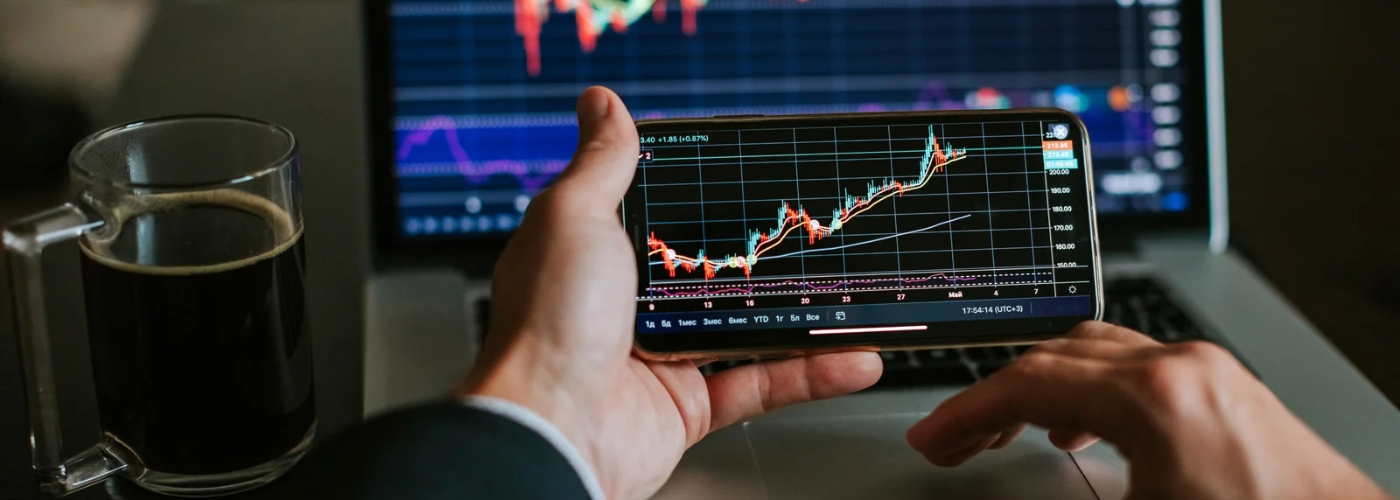What is Margin trading: definition and rules on EXEX

Description
Margin trading is a trading option that allows the trader to use more money than he has. Margin trading has advantages and risks. More information about this type of trading is at the exex.com blog
What is the margin in trading?
Traders can trade in the stock and cryptocurrency markets using their finances and borrowed finances. Not all traders have significant financial resources, so they turn to other market participants for loans. Due to the fact that traders can get loans, they can trade. This type of trading is called margin trading.
Margin trading is associated with margin. What is the margin in trading? In the classic definition, the margin is the difference between a commodity's purchase and sale prices.
In the stock and currency markets, under the margin means a deposit or block for transactions a certain amount of money in the trader's account. Another way to say that the margin is a deposit blocked by the broker in the trader's account when opening a deal at the exchange. Margin is expressed in percentages, which show how much of one's funds must be deposited to open a position. For example, a 20% margin requirement says that you can open a trade in an asset if you have a fifth of its price in your account.

There are 2 types of margins:
- Initial (takes into account the original amount of the asset to access the collateral).
- Minimum (the total price of the asset is taken into account, after which the broker forcibly closes the position at the market price).
In turn, margin trading is trading operations that use funds provided as a credit against the pledge of the specified amount. There is also a definition - it is trading at exchanges when traders can carry out operations with assets and securities even if they do not have funds for their purchase.
Define margin trading assumes knowledge of what is happening in the short and medium-term markets.
Buying on margin
How does margin trading work? In a sense, margin trading is the interaction between a trader and a broker, where a trader can buy much more of a stock or asset than he or she would if he or she solely used his or her own funds. This is trading with leverage. How does this type of trading function?
Suppose a trader has the capital to purchase 10 stocks. If the broker provides a leverage of 2 to 1, then the trader can already buy 20 shares. If the broker approves the 10-to-1 leverage, then the trader can buy 100 shares of the company.
Margin trading is also possible in the cryptocurrency market. Cryptocurrency margin trading is essentially the same thing, only in this case, one buys and sells cryptocurrencies on exchanges. The purpose of buying and selling is to make a profit during the fluctuations in the price of cryptocurrencies. The trader gets a loan from the exchange to increase the order volume. If a trader wants to understand the basics of margin trading, he should study the basics of market trading, an introduction to fundamental and technical analysis principles.
On cryptocurrency exchanges, traders can open multiple positions if they engage in margin trading:
- Long (long), when the trader expects the cryptocurrency to rise;
- Short (short), when the trader is waiting for the cryptocurrency to decline in value.
Advantages and disadvantages of margin trading
The advantages of margin trading are that traders can trade in a market where entry is allowed if there is significant initial capital. For example, the price of a lot on Forex can be hundreds of thousands of dollars or euros. But due to the leverage, a trader can access it even if he has a small deposit.
Traders can also speculate on the increase in the asset's value and decrease, opening a short position. It is possible to receive considerable profit due to margin trading.
Through margin trading, traders can open a position more quickly and don't have to draw down a large amount of money.
Nevertheless, margin trading also has disadvantages. The main disadvantage of margin trading is the risk of large losses. It is possible to lose all the funds in the account. In this case, the trader will owe even more to the broker.
Therefore, margin trading is not recommended for novice traders who are just beginning to learn the intricacies of trading transactions in the stock or cryptocurrency market.
Example of margin trading
Here is an example of such trading on the market. Suppose a trader, after doing some analysis, considers that the euro will grow and buys the euro/dollar pair. He needs one hundred thousand dollars to buy the pair. The trader applies for the leverage. To purchase a lot with an initial deposit of one hundred dollars, he needs a leverage of 1 to 1000.
If the trader conducts a correct analysis and his forecast comes true, the final profit will be high if 1 to 1000 leverage is applied.
Margin financing
As stated earlier, there is a risk of large losses when trading on margin. For those investors who are unwilling to take such a high risk, there is another way to generate income using leveraged trading. They are offered margin financing. It means the ability to finance another trader's margin trade.
Margin financing implies a certain period of validity. The risk of providing finance is lower here, as a position can be forcibly liquidated to avoid losing all funds.
Related to margin trading is such a concept as a margin call.
A margin call signals to a trader that there are not enough funds to open a new position and maintain the current one. The broker has the right to close the position at any time using the trader's asset. Thus, the portfolio price will not fall to a critical level.
Best platform for margin trading
What platform should be chosen for margin trading? It is impossible to answer this question unequivocally, as well as what is the best margin trading account. It is recommended that traders become familiar with the technology offered by the leading exchanges on the market. History shows that the best opportunities for margin trading are provided by those exchanges which have been operating on the markets for at least several years, where the network is fast, and transactions are performed without delays.

It is worth noting that many traders are moving to the cryptocurrency market, where they can also make high profits through margin trading. In the last 2 years, DeFi margin trading has been gaining popularity. Its essence is that the trader borrows cryptocurrency using decentralized lending based on a smart contract. Any participants in the crypto market can act as lenders.
Difference between margin and futures trading
What is the difference between margin and futures trading? In margin trading, you have an opportunity to work with specific trading pairs, while futures trading does not offer such pairs.
The difference also lies in the fact that a margin trade does not offer a clearly defined time frame. In contrast, futures contracts assume a time frame that is set in them.
The difference is also that during margin trading, the price of the asset pair is similar to the price on the spot market. And the futures price is made up of the current spot price and the cost associated with holding the position for the period which preceded the delivery date.
Margin Trading in India: What's in it for you?
Traders in India are very happy to use margin trading tools in their work. They are available, convenient, and, most importantly, effective. Regardless of where this type of trading is used, in Bengaluru or Hyderabad, exchange customers get their privileges in the form of:
The ability of a resident of India to make large trades in the absence of the necessary capital; opportunity to get many times more profit by opening positions on margin; Equal treatment to all traders in India, regardless of initial capital or other indicators for the trader; Margin trading forces you to be more responsible in terms of the security of your portfolio. For example, if you live in northern India and want to use margin trading, you will study the asset in advance and analyze the market before making risk capital.
Conclusion
To sum up, it should be noted that margin trading can be called a profitable tool, allowing for high profits. If it is applied correctly, the income will be significant in a short time.
At the same time, margin trading bears risks. It is recommended only for those traders who have worked in the market for at least several years. If there is corresponding experience, then the trader can avoid loss of funds and earn good profit within one trading session.



